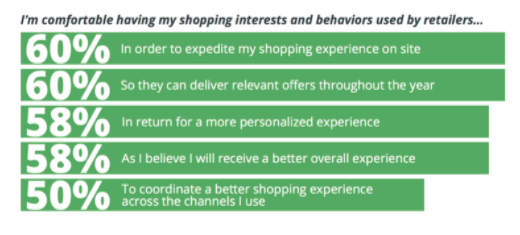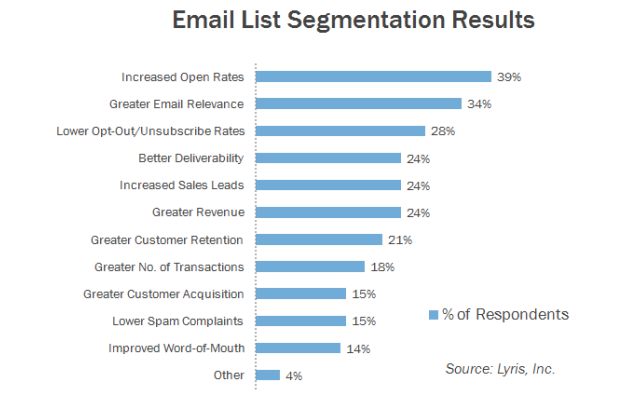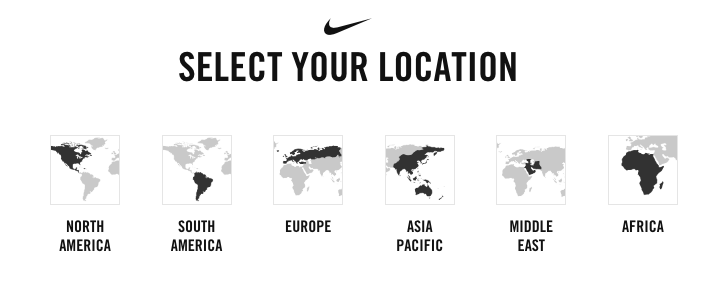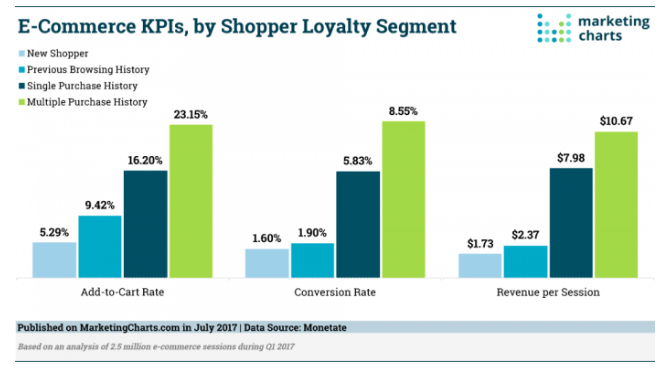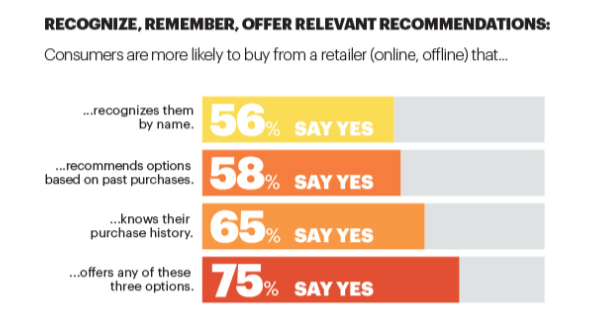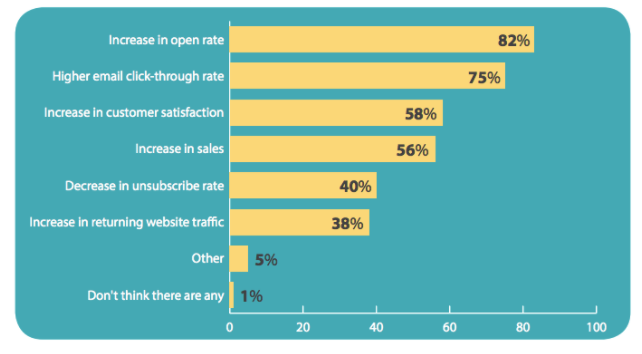Big loans make some people squeamish.
This used to surprise me.
I wondered how, for example, a client could talk openly about life insurance, with its end-of-life implications, then get sweaty palms over a mortgage refinance.
Another client might, after systematically considering the need for disability insurance, balk at a mortgage equity line of credit to pay for home renovations.
Why all the discomfort, I wondered?
Now I get it.
Borrowing money makes us feel vulnerable because it takes away some of our freedom.
Mortgages, Loans, and Borrowing Money: The Basics
Taking out a $200,000 mortgage, for instance, means you’ll be factoring the burden into all your financial decisions for the foreseeable future.
As your family grows and the world changes around you, you’ll still be living with the same mortgage loan.
What if you lost your job?
What if the housing market crashed again?
How would you pay it all back?
Yet…
- without a mortgage, how could so many of us afford the home that becomes a sound and reliable financial asset?
- without student loans, how could we pay for the college degree that helps land a well-paying job?
- without a mortgage line of credit, how could we renovate the house to optimize its resale value?
You get the idea. It’s a bit of a Catch-22.
Hence the squeamishness.
Statistics say most of us will need to borrow money at some point in our lives. By understanding and controlling the borrowing process as much as possible, you can use credit as a key to unlock a more secure future.
You know that little voice in your head that grows more talkative when you’re thinking about borrowing money?
You can answer it with facts.
When Does it Make the Most Sense to Borrow Money?
 Do you know any new parents? Some of us remember being new parents.
Do you know any new parents? Some of us remember being new parents.
What a scary place to be: responsible for that little life all of a sudden, for keeping her safe from strangers, and germs, and ridicule, and the like.
Some new parents have to fight the temptation to stay home all the time.
Staying home is safest, right?
So long as you have a few gallons of hand sanitizer and reliable child locks on the cabinets?
After a while, most of us learn we can’t parent in fear — sooner or later you have to get out and face the crowds and the cold germs. Otherwise, your child won’t learn how to live in society.
Sure, you still keep a close eye on your children, and you avoid unnecessary risks, but you also loosen the grip a little. You find the right balance.
Believe it or not, a similar balance can help when you’re borrowing money.
A reluctance to borrow money can be healthy when it prevents us from getting overextended by borrowing money unnecessarily.
The same reluctance, though, can stunt our financial growth by limiting our spending power to the size of our savings account.
What’s wrong with spending only what we have, you ask? Didn’t Grandpa say you should save up for what you want instead of using store credit?
Well, yes. And Grandpa was right, at least to a point.
If you’re using credit to buy dinner or a new car stereo or a trip to the spa, you may soon have a problem. Such things most likely will not help you build a more stable financial future. You’re taking risks without lining up a long-term reward.
Before taking out a loan of any size ask yourself what you’re gaining by making the purchase right now instead of waiting until you have the cash in hand.
In many cases, you’ll find there’s a lot to be gained by borrowing money to finance a purchase, like when you’re…
- buying a house: The average home costs $188,000. Could you save that much while paying rent in the meantime? If so, what will the house cost by the time you get the money saved? (Probably a good bit more than $188,000.) A mortgage loan can help get you into the housing market now.
- renovating your home: Realtors say homes with up-to-date kitchens and bathrooms sell more quickly and for a higher price than homes with outdated facilities. Updating your kitchen and bath can maximize your home’s value, so borrowing money for those renovations can have an immediate impact.
- starting a business: Got a great idea for a business? In a dynamic economy, your idea may have an expiration date. Borrowing start-up costs provides a huge spark to get your business off the ground while you still have time to corner the market.
- paying tuition: Grants, financial aid, and scholarships pave a smoother path for some students; others must take out student loans to finance the education required for higher earnings down the road.
- buying a car: Yes, cars depreciate in value, but if you can’t get back and forth to work without a reliable car, can you keep your job? For some of us, a car loan is a necessary evil.
Only you can know with certainty whether a loan can help you build a more certain financial future. The scenarios above affect people every day, but it’s not an exhaustive list because everybody faces different challenges.
If you already have access to a car or to reliable public transportation, maybe you shouldn’t finance a car.
On the other hand, a real estate agent may need a loan to fix her van’s air conditioner because it’s hard to keep clients when you’re driving them around in a sauna.
How Do You Go About Taking Out a Loan?
No matter why you’re borrowing, you can balance the risk-reward ratio more easily when you understand the borrowing process.
Different loans work different ways, so to keep things simple let’s take a look at the process of borrowing $200,000 to buy a house. A mortgage, after all, is among the more complex loans you can find and the most often used loans.
Would you simply walk into a bank and ask a teller if you can borrow a couple hundred grand?
You could, and if you happened upon a friendly and helpful teller, he may point you toward the loan officer back in her corner office.
It helps to have some knowledge going in, though, so you’ll know things like…
The Importance of Your Credit Score
If you were loaning someone $200,000 you might want to know a few things about the borrower:
- Does she tend to pay people back?
- Can he afford to make payments on the loan?
- Does he have a job?
- How many other people have loaned her money lately?
When you apply for a mortgage, your lender will wonder the same things about you, and it will find answers, in part, through your credit score.
A higher credit score means you present a lower risk for non-payment. As a result, a higher score means you, as the borrower, can have more control over the lending process.
When you have more control, good things can happen:
- You can get lower interest rates, potentially saving tens of thousands of dollars over the life of a mortgage.
- Lower interest charges can free you up to shop for more valuable homes, meaning your housing dollars can go farther.
- You can choose from a variety of loan types, and you may not need a federally subsidized loan which can lead to certain limitations.
In short, rather than having your mortgage loan choose you, you can choose the right mortgage loan for your specific needs and preferences.
So what does it take to get a higher credit score?
Patience, good decision making, and diligence. Pay your bills on time, keep a good balance of accounts open, and don’t borrow too much too often.
It’s easier than ever to keep an eye on your score. Apps like Credit Sesame and Credit Karma — two of my favorites — have taken the mystery out of your magic number.
Not only can you monitor your score for free on your smartphone or computer, these services also show you what kinds of new accounts could improve your score.
Efforts to improve your score may take a few months, or even a few years, to pay off. So it’s never too soon to start working on it.
The Importance of Interest Rates
As homebuyers we get caught up in the big numbers:
- property values
- tax values
- HOA fees
- insurance
But there’s a not-so-big number that will reverberate throughout the life of your loan, and it usually applies whether you’re borrowing money for a house, a car, or for school.
It’s your interest rate, of course.
Essentially, your interest rate determines how much you’ll pay for the privilege of borrowing. After all, banks do not lend money as a public service.
You might be surprised how much difference a single point on your interest rate can make over the life of a loan.
Take our 30-year mortgage of $200,000:
- At 5 percent interest, you would pay about $186,000 in interest charges in addition to repaying the $200,000 principal over the 30-year loan. (You’d have a monthly house payment of $1,074, not including insurance, taxes, or other fees.)
- At 4 percent interest, you would pay about $143,000 in interest charges in addition to the $200,000 principal ($955 per month payment).
- At 3 percent interest, you would pay about $103,000 in interest charges along with the $200,000 principal ($843 per month payment).
Longer term loans have more time to accrue interest, so a 5-year auto loan or a 12-year mortgage would require lower total interest payments than a 30-year mortgage, but rates still matter.
Financing a $35,000 car, for example, at 6 percent interest will result in about $5,600 in interest charges. If you can get a 5-percent interest loan, you’d pay only $4,600 or so in interest.
No matter what you’re financing, shopping around for the lowest interest rate you can qualify for will usually pay off.
You may even qualify for 0 percent interest on some purchases, though not cars or houses. Be careful with these sweet offers. They often bite back.
The 0 percent rate usually applies for only a short period of time. If you have not repaid the balance when the introductory period ends, you may face an exorbitant rate on the remaining balance.
Or worse, if the interest during the introductory period was deferred, it will all kick in retroactively.
The Importance of Down Payments
The vast majority of new mortgage loans require borrowers to put some money down, usually between 3 and 10 percent of the purchase price of the home.
A down payment creates a barrier to some borrowers. Putting 10 percent down on a $200,000 house, for example, means you’d need $20,000 in cash up front.
Borrowers who can’t afford a large down payment should look into a federally subsidized loan (FHA or USDA, for example). Subsidized loans tend to favor more financially challenged borrowers, but you could be giving up some freedom in the process.
- You couldn’t use an FHA loan to finance an investment property, for example.
- Many federal loans also require you to buy private mortgage insurance, which protects your lender if you default on the loan.
- Additionally, you may run into obstacles if you’re buying an older home with a federal loan because of the existence of lead paint or other out-of-date and potentially dangerous building materials.
If you can afford it, making a sizeable down payment helps you in the long run:
- You start the loan with equity, meaning you already own a chunk of the property even before making the first house payment.
- When you own at least 20 percent of the home’s value, you can cancel private mortgage insurance (PMI), which you pay not to protect your investment but your lender’s. A 10 percent down payment means you’ll reach that 20 percent threshold more quickly. A 20 percent down payment means you never need to buy PMI at all.
- Having 10 percent to put down opens a wider array of conventional loans which gives you more freedom to control the lending process.
What if you simply don’t have $15,000 or $20,000 to put down on a mortgage?
Should you wait until you do before shopping for a home?
Not necessarily.
Unless you can save a down payment within a couple years, you’d probably do better to apply for a subsidized loan which requires a lower down payment, or in some cases such as a Veterans Affairs loan, will not require a down payment at all.
Yes, you’d be starting home ownership in a more vulnerable position without a down payment.
But at least you’d be entering the housing market and investing your monthly house payments into your own future instead of your landlord’s future.
The Importance of Finding the Right Lender
As I said earlier, you could simply walk into the closest bank and ask for a loan. Most banks have knowledgeable staff and a wide variety of personal, auto, business, or mortgage loans.
Remember this, though:
When you need a loan, you should shop for one.
If you needed a new pair of dress shoes, would you walk into the closest department store and limit yourself to the local inventory?
No, you’d more likely do a little research first. If the closest department store specialized in outdoor gear and you needed dress flats, you probably wouldn’t even visit.
You should give your loan product the same level of scrutiny because not all lenders offer the same services.
Start by finding out exactly what you’re looking for:
- Will you need a subsidized mortgage?
- Do you have less-than-good credit?
- Are you a first-time homebuyer?
- Are you buying an investment property?
- Would you like to deal with someone face-to-face, or do you feel OK applying and providing loan documentation online?
- What’s more important: in-person customer service or lower interest rates?
- Would you like help to find a car, or just financing it?
The answers to these sorts of questions can help match you with the right lender.
Not all banks, for example, are authorized to issue a federally subsidized loan. An online-only bank can usually offer a better rate than your neighborhood bank. Many credit unions will help you find a specific kind of used car.
Borrowing: It’s Not Only About Mortgages, Of Course
We talk a lot about mortgages for several reasons:
- It’s a loan many of us will need at some point in life.
- When you know the nuances of getting a mortgage, other loans may seem easier to understand.
- A mortgage loan can be a key to a more stable financial future.
- For most of us, a mortgage may be our largest debt.
Naturally, though, the lending industry includes a wide and ever-growing array of products which extend well beyond home loans. I’ve alluded to several kinds of loans above, but let’s take a closer look at some other common products.
Auto Loans
Unlike a home, which should appreciate in value as time passes, your car loses value over time.
Often, a new car’s value depreciates rapidly the minute you take ownership.
This creates a problem if you’ve financed the entire purchase price. You could never sell the car for enough to pay off what you owe. A lot of folks would say you’re “upside down” on the loan.
So if you can afford to buy a car without borrowing money, go for it. If not, I suggest keeping debt under control by spending only what you need.
You’ll also benefit from putting some money down and, of course, shopping around for the lowest interest rate you can find.
Consider arranging your financing before shopping for a car. That way you know your price range and will not have to negotiate financing while simultaneously negotiating the purchase of your car.
Student Loans
These are another necessary evil, but they may not be necessary for everyone.
Before resorting to student loans, apply for scholarships and grants. Even if you succeed in paying for only part of your annual tuition with scholarships or grants, you’ll be preemptively eliminating debt.
For many students, loans provide the only reliable way to finance higher education, which is why the average college graduate has about $39,000 in debt.
So before borrowing, take a few minutes to learn about the borrowing process:
- Subsidized vs. private loans: You can borrow money from the government or from a private lender. Government loans should always have a fixed interest rate and more flexible repayment terms. Still, private loans may offer flexible terms such as a variable interest rate which can save some short-term borrowers money.
- Borrow only what you need: When you’re in college, it can be tempting to borrow, say, $6,000 more than you need for university-related expenses. Why not have a little financial cushion? Cushions are nice, but they tend to grow less comfy when the loans come due after graduation.
- Be proactive about your debt, even if you can’t afford it: So long as you’re enrolled in college, federal student loan collectors will leave you alone. It can be a rude awakening when you graduate (or withdraw) and suddenly have debt hanging over your head. Federal loans usually include methods for lowering your payment based on your income, but only if you ask for help.
Business Loans
Starting a business can cost a fortune. Getting the right kind of business loan to pay start-up and initial operating costs may provide a huge piece of the puzzle.
Chances are you can find a business loan to meet your needs:
- Subsidized small business (SBA) loans offer tons of borrowing power since the government backs repayment.
- A traditional term loan works more like a conventional mortgage.
- A business line of credit behaves sort of like a credit card. You have a cap on what you can borrow, but you pay interest only on what you’ve spent.
- A personal business loan lets you leverage your personal credit score and borrowing power to help your new business get going. (You’re also personally responsible for repaying it.)
- Special programs like equipment financing let you buy expensive equipment while keeping that debt separate from other start-up expenses like rent and salaries.
- Short-term business loans are great for less cash-heavy business start-ups.
- A merchant cash advance allows you to repay your business loan gradually and automatically via deductions from your credit card revenue. This can help if you’re starting a retail business.
You can find even more specialized products for business borrowing.
Like any other kind of borrowing, be sure you have a plan for how to use the money and how you’ll repay it. And shop around for the best loan and the best terms.
Post-Mortgage Borrowing
When you already have a mortgage loan and you’re making the payments just fine, you may start wondering about a second mortgage.
These kinds of loans give you access to the equity — the portion of your home’s value you already have paid off — so you can spend it on home improvements.
A second mortgage can help keep your home updated so it’s easier to sell. When you take out a second mortgage, you’ll have two house payments: your original mortgage and the additional loan.
Another option: A home equity line of credit. These work more like a credit card funded by the equity in your home. Rather than borrowing a lump sum you can access your equity as needed.
Either way, be sure you’re spending your equity on your home and not on other living expenses. If you’re not reinvesting the equity into your home, you’re chipping away at the strong financial foundation your mortgage should be building.
Personal Loans
If you do have non-home related expenses to consider, a personal loan may be able to help.
Let’s say you miscalculated on your taxes and owe Uncle Sam $5,000, and he’s threatening to charge interest and late fees (then charge interest on your late fees).
In such a scenario you may need five grand in a hurry. Your bank or credit union likely has a personal loan program for non-collateral borrowing.
Sure, you could get a credit card for this purpose, but the interest on a personal loan will likely be much lower, and a personal loan has a payoff schedule, meaning you won’t risk carrying the debt indefinitely.
Consolidations and Refinancing
Let’s say you do wind up with some open-ended credit card debt along with an “upside down” car loan, more student loans than you’d intended, and a personal loan that seemed like a fine solution at the time… you get the idea.
In the midst of your worrying, let’s imagine you see one of those commercials for a loan consolidation program guaranteed to ease your troubles.
Should you do it?
If you’re deciding between paying off debt and paying your electricity bill, then you probably should consider the lower monthly payment a debt consolidation loan can offer.
This budget relief may cost you in the long run, though. The total interest paid on the debt consolidation loan may surpass the interest you would have paid without the consolidation.
Sometimes, in a no-win situation, you have to get immediate relief wherever you can find it. So if you’re thinking about a consolidation loan, look for one to match your needs:
- A non-secured consolidation loan does not require collateral and will probably cost more since it is riskier to the lender.
- A secured consolidation loan will tap into your home equity or other durable assets as collateral. You’ll likely get a lower interest rate, but you’re also tying up your assets.
You won’t find any simple, one-size-fits-all answers, so investigate your options thoroughly and try to find the right balance between your present challenges and your future needs.
About refinancing: Ultimately, a consolidation loan refinances multiple debts. You can also refinance one debt at a time. You may be able to save every month by refinancing your mortgage, for example, especially if…
- Your credit score has improved since you took out the original loan, meaning you’ll qualify for a significantly lower interest rate now.
- Interest rates, in general, have decreased since you got your mortgage.
- You have a variable interest rate mortgage whose low intro rate is about to expire, meaning your monthly payment is about to start increasing.
Often, you’ll need to pay some closing costs to refinance your mortgage. So be sure your monthly savings are worth the up-front costs.
It’s Not a Perfect World, But Knowledge Helps
In a perfect world, we’d all have the money we need to buy our houses and cars and to pay our tuition. And when we decided to start a business, we’d simply withdraw start-up costs from our savings accounts.
Wouldn’t that be something? I guess we can dream about it.
In the meantime, if you need to borrow money either to get ahead in life (or to rectify some previous mistakes), take heart: There’s an entire industry set up to help you.
But you can help yourself by knowing how financing works — by knowing…
- a good credit score opens more doors
- a low-interest rate and other favorable terms can give you more borrowing power
- you should use borrowing sparingly, only as needed
- how to shop around for the right loan.
Some of us have this kind of knowledge because we have made a lot of mistakes. I won’t mention any names, but someone I know once showed up at a car dealership and eagerly accepted a 16.99 percent interest rate on a used pickup truck.
He thought he’d learned his lesson about borrowing, but then he paid off the truck with a second mortgage, which made selling the house almost impossible the next year.
You don’t have to learn the hard way. Know the basics of borrowing and take control of the process.
When you’re in control your loans become tools to serve you. They will work to unlock a more secure financial future.
The post Mortgages and Loans: The Basics of Borrowing appeared first on Good Financial Cents.
Source Good Financial Cents https://ift.tt/2wqpfTh

 Do you know any new parents? Some of us remember being new parents.
Do you know any new parents? Some of us remember being new parents.